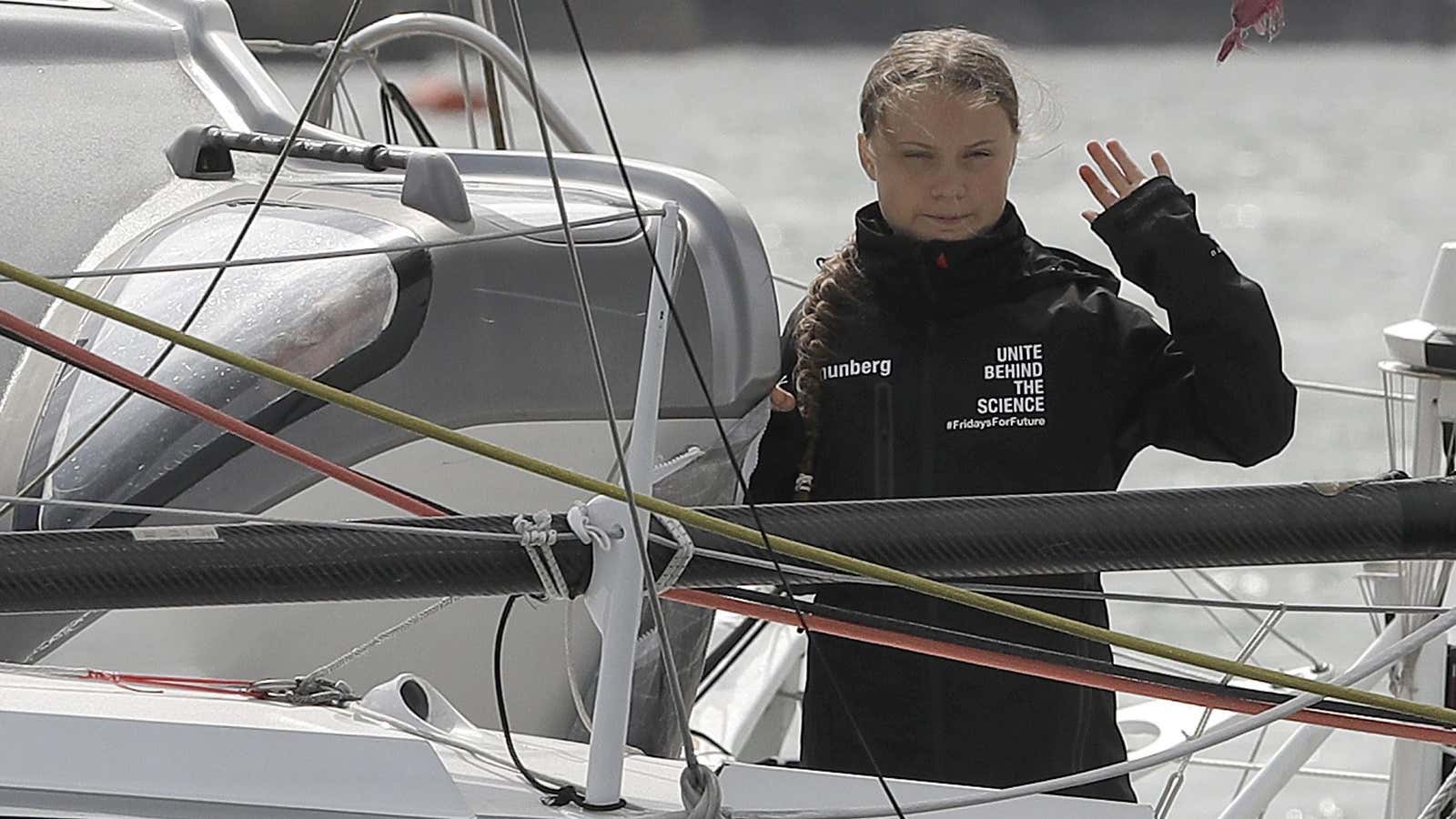Environmental activist Greta Thunberg is a long way from where she needs to be. Since a UN speech in New York in late September, the 16-year-old Swedish campaigner has spent weeks traveling overland en route to the COP25 climate summit in Santiago, Chile. But a last-minute change of location due to that city’s anti-government protests—the event will now be held in Madrid, Spain—has left her scrambling for an eco-friendly lift across the Atlantic.
Thunberg, who started the now-international student climate strikes in late 2018, appealed to her fans to help her get to Madrid by Dec. 2, promising gratitude to whoever could help her find transport.
Supporters will doubtless do what they can to help her to reach the summit in time. But what are the options currently on the table?
Mode of transport: Cargo ship
Carbon impact: Negligible
The most obvious and climate-friendly solution is riding aboard a cargo ship, thousands of which cross the Atlantic each year. It’s a highly unusual means of transport, though not unheard of: In June 2018, fellow Swede Kajsa Fernström Nåtby took the 12-day journey aboard the freight ship La Traviata, at a cost of $100 a day.
While cargo ships don’t generally transport passengers, as Wired reports, they occasionally have “a handful of cabins for transporting real passengers, tucked away among the sun-dried colors of hundreds of freight containers.” It’s a headache to get aboard (paperwork, doctor’s visits, a specialized agent), but one perhaps worth the carbon savings. Speaking to the magazine, low-carbon shipping expert Tristan Smith explained that these ships emit much less greenhouse gases per ton than planes—and the effect of an extra passenger is as minimal as “a feather in a giant’s cap.”
Mode of transport: Yacht
Carbon impact: It’s complicated
Thunberg’s original journey across the Atlantic was aboard a “zero-carbon” racing yacht, with her passage paid for by its owners. Conditions across the two-week journey were basic but bearable, with no toilet or electric light onboard.
But while her own trip may not have had any significant climate impact, some of the crew members who traveled with her returned to Europe on flights. Others were also flown out for the yacht’s transatlantic voyage. While these flights were offset, it would arguably have been less impactful for Thunberg to offset her one flight, rather than necessitating half a dozen people to do the same.
Mode of transport: Cruise ship
Carbon impact: Circa three tonnes of CO2
A cruise ship is probably the worst possible way for Thunberg to reach Madrid. These hulking luxury liners emit between three and four times as much CO2 per kilometer as a flight—while being more expensive and much more time-consuming than flying.
Mode of transport: Flying
Carbon impact: 0.935 tonnes of CO2 (assuming an economy class seat with no offsets)
As a rule, Thunberg doesn’t fly. It’s not hard to see why: A single transatlantic flight can exceed some people’s entire carbon budget, and the message she is trying to spread might be muddied if she’s thought to be a hypocrite. But unless she can find a spot on a cargo ship, this may be the least climate-negative way to travel—especially if she purchases carbon offsets to “counterbalance” the effect of the flight.
